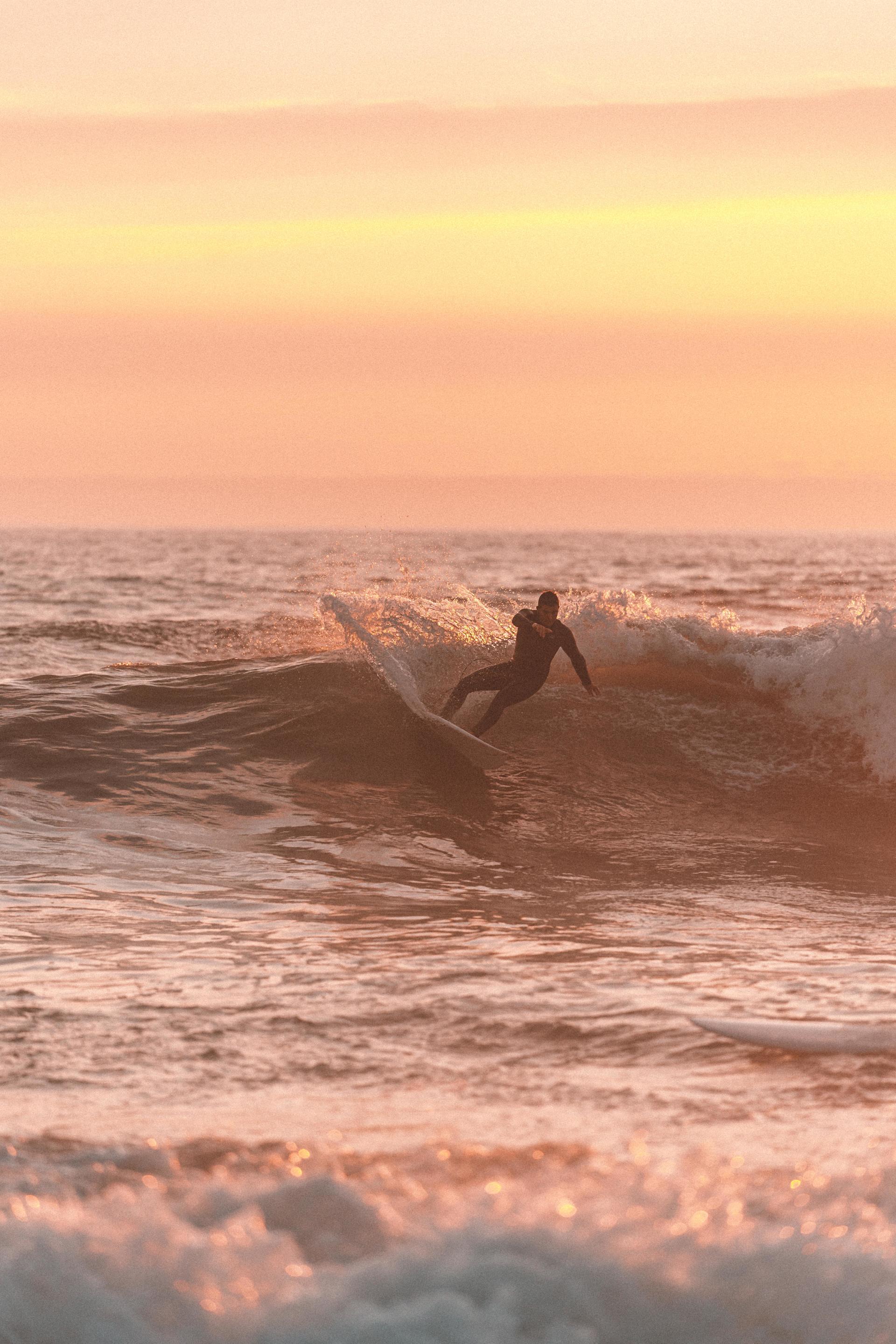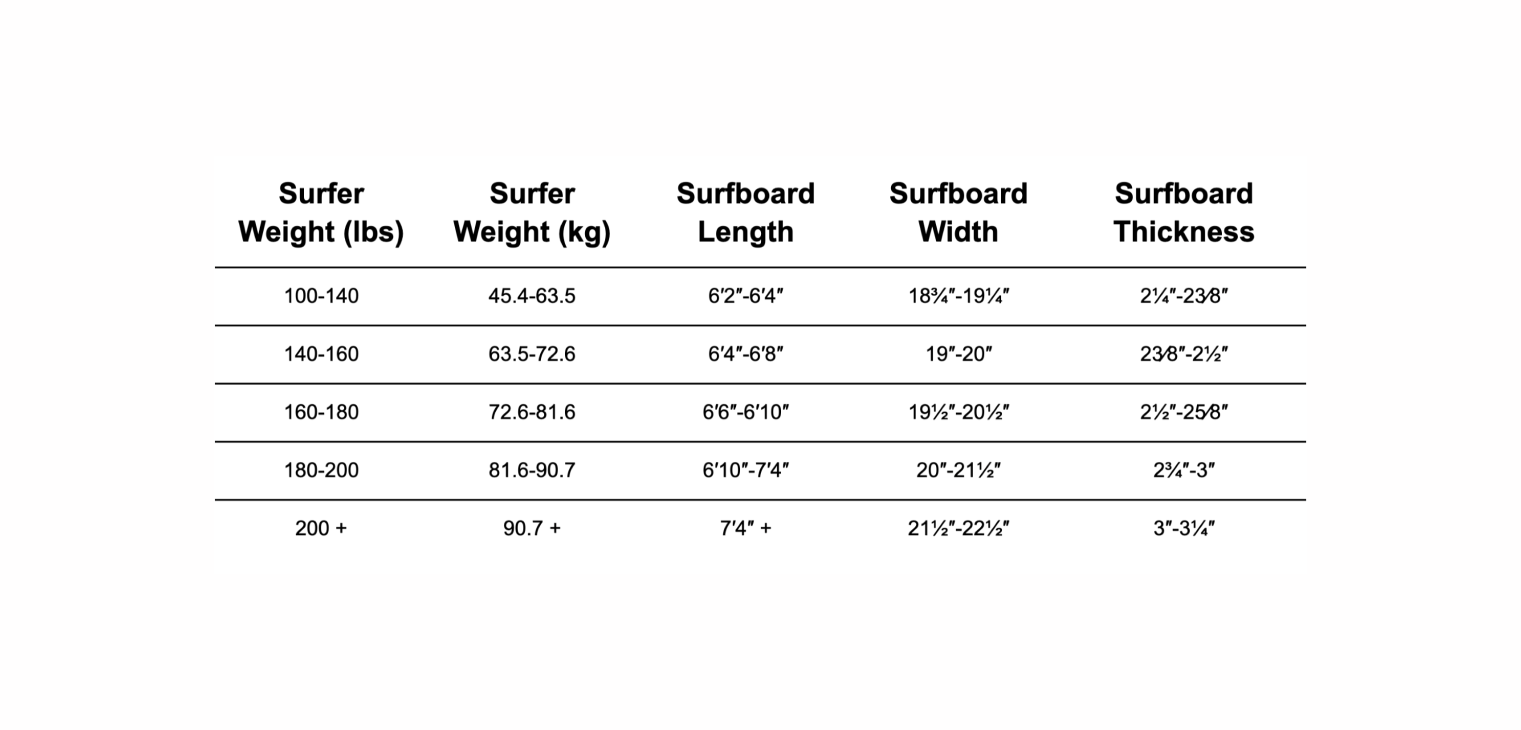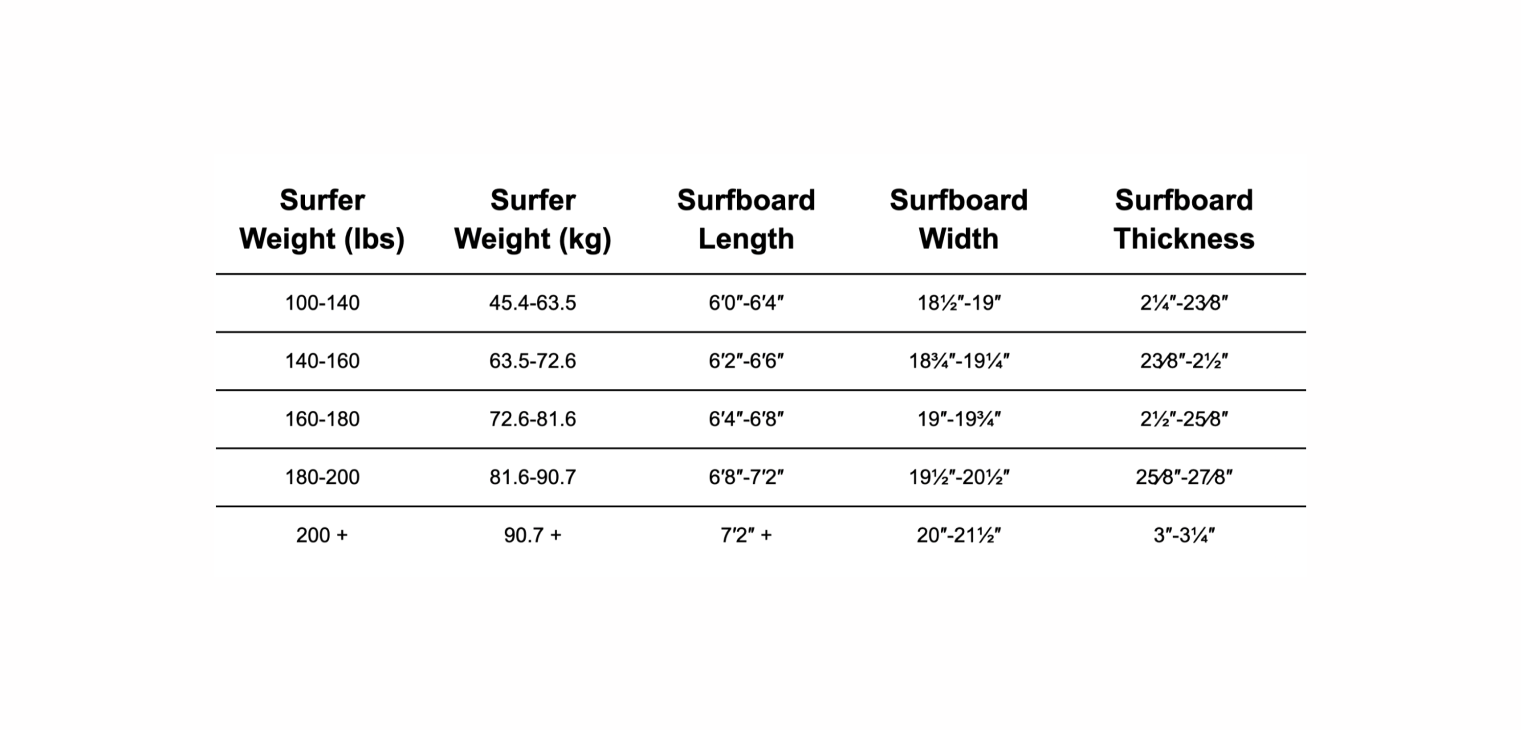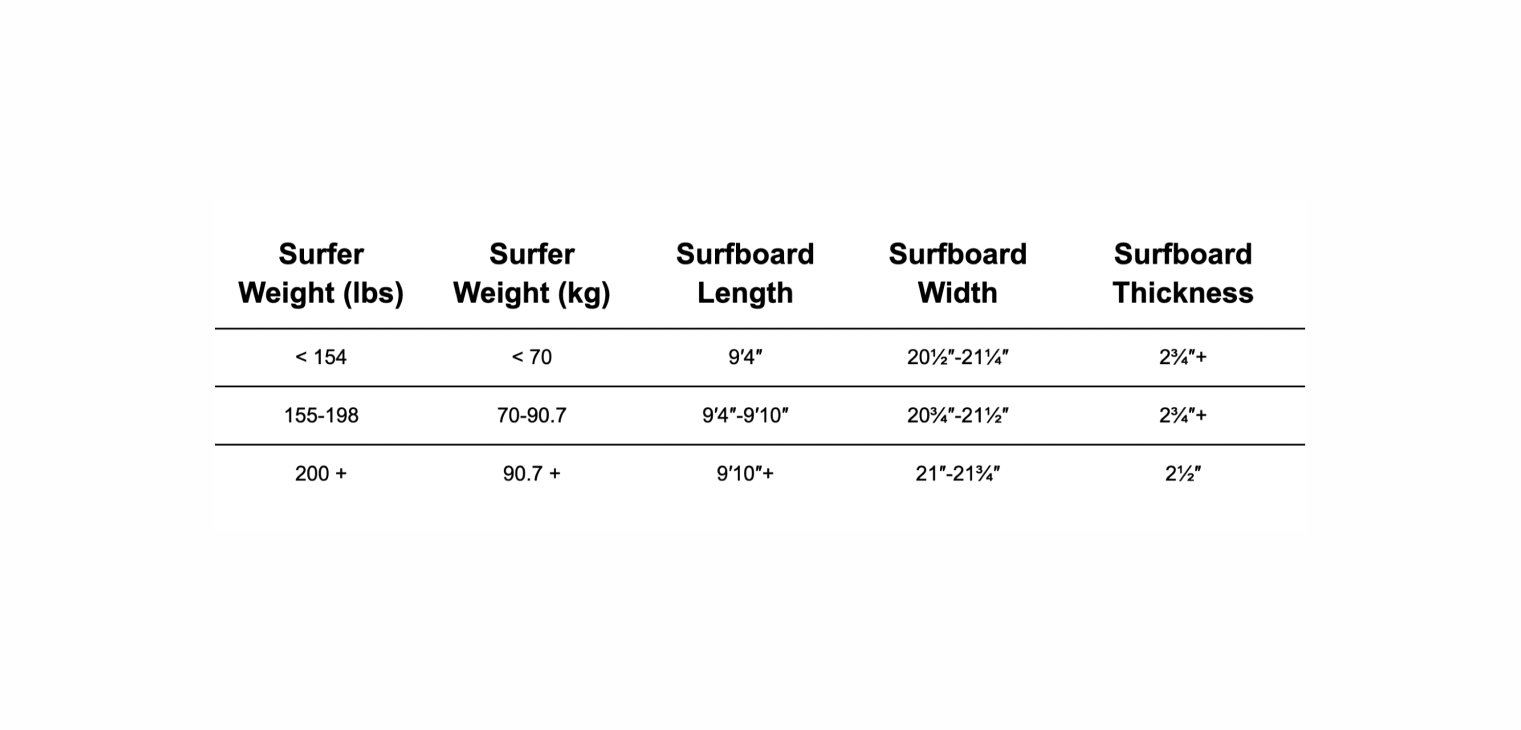
How to choose the best surfboard: What size surfboard should I get?
June 30, 2025Whether it's time to get your very first board or if you want to expand your quiver with a new beauty, knowing which board to choose is important. This guide will help you to understand the surfboard size and volume, which type of surfboards to choose between and everything else you need to know to choose a surfboard for every level.
There are countless surfboards to choose between, whether you order one online, go to your local surf shop or buy a custom board directly from a shaper. Many advanced surfers have a good knowledge of which boards to get, while it can be a trickier process for beginners.
When picking a surfboard there are many factors that come into play and a bunch of questions may pop up. What size? Which type? And what about volume?
Let’s dive into that!
What you need to know when choosing a surfboard
There are many factors to take into consideration when choosing a board that's right for you. Here are four questions you should ask yourself to know which board to choose:
What is your skill level?
What are your height and weight?
What is your fitness level?
Which wave types do you want to catch?
Question 1: What is your skill level?
It’s important that you choose a board that isn't too hard for you. So, which is your current surfing level? Beginner, intermediate or advanced? If you're not sure then you can ask an experienced friend or surf coach to watch you catch some waves and give their opinion. Put your ego to the side here, you don't want to buy a board that's too hard and just ends up collecting dust in your quiver.
Question 2: What are your height and weight?
These are key factors in determining your board's size and volume, but we'll get back to that further down the post.
Question 3: What is your fitness level?
As you know, surfing is a physically challenging sport and requires a lot from the surfer. If your fitness level is on the weaker side, then a board with more volume will help to make the paddling easier. As you get stronger at paddling, you can advance to a smaller board.
Question 4: Which wave types do you want to catch?
What types of waves you want to surf should be taken into consideration when you choose aboard. What conditions do you enjoy surfing in? Relaxed cruising or fast rides? Bigger or smaller waves? Unfortunately, the perfect all-waves-and-condition-surfboard doesn't exist.
Thus, as you progress and want to surf different styles it could be a good idea to build a quiver with different boards.
Different types of surfboards – and when to use them
Your surfboard must match your needs. Since there isn't one surfboard that ticks all the boxes for what a perfect board should be, compromise is the keyword here. There are pros and cons with every kind of board on the market.
Some of the most common boards you’ll find in the surf shops are:
Fishes: These boards will give you a good deal of speed and flotation. The fish board works well on small to medium waves and will make riding weak waves enjoyable! A weakness with this board is that it’s harder to catch waves with it than it would be with a bigger board. It provides more manoeuvrability than the longer boards, but compared to a shortboard it's more limited.
Shortboards: This is the board for advanced riders who want a great performance board with top manoeuvrability. Clean and powerful conditions are ideal for this board. The shortboard is hard to paddle and it's more difficult to catch waves with a shortboard than with a bigger board. A common mistake among intermediate surfers is to switch up to a shortboard too soon and thereby slowing down their progress when they can’t ride it.
Funboards: If you are a beginner who wants to level up from a longboard, the funboard can be a good choice. This board can be described as somewhere in the middle of the fish and the longboard. From the longboard, it provides easy paddling and from the fish, it allows more manoeuvrability. Funboards are good for beginners and intermediate surfers in small swells.
Longboards: as their name reveals, these boards are on the bigger side, often between 8-11 feet. The longboards can be used by beginners to advanced riders and work well in low waves. It's a great choice for all-year-around surfing. The longboard provides smooth rides with good flotation and stability. This type of board isn't made for quick turns and it can be quite hard to move it around due to its large size.
Surfboards for beginners: As a beginner, you should start learning to surf on a foam board with lots of volume. The high volume surfboard will provide stability, control and make the board easy to paddle and catch waves with.
Understanding surfboard size

The four questions at the beginning of this post are the essential factors in determining the surfboard's size. Plus: depending on what kind of board you want to surf on, the size you need will vary.
Some things to keep in mind when choosing a surfboard size:
A beginner surfer needs a much bigger board than an advanced surfer.
Normally, the smaller the board is, the harder it is to catch waves with it. Make sure that you don't choose a board that’s too small for your level.
If you are surfing less than once per week you might be needing a bigger board than someone who surfs weekly.
Here are a few standard charts that will guide you in choosing different types of boards. The measurements show the minimum sized board you should get. Keep in mind that this is just a guide, if you are unsure of what size board you need then ask a staff member in the surf shop. Some surf schools rent out surfboards in different sizes, it could be a good idea to try one out before you decide which one to buy.
Choosing a shortboard size
For you who surf less than once per week:

For you who surf once per week or more:

Choosing a longboard size
For you who surf less than once per week:

For you who surf once per week or more:

Understanding surfboard volume

You calculate the surfboard volume by multiplying the surfboard's length, width and thickness. The volume is expressed in litres and can determine the board's speed, stability and efficiency to paddle. It is tricky to calculate the volume of a surfboard, so this is normally done by the surfboard shapers by using simulations on the computer.
In a surf shop, you will find that the information on the board will look something like this: 6'2'' x 21 ½ x 2 ¾'' - 41.9L. This means that this fish board is 6 feet and 2 inches long, 21 ½ inches wide, 2 ¾ inches thick with a volume of 41.9 litres.
Common questions about surfboard size
How do you know what size surfboard to get?
A little repetition from earlier in this post: the size of your surfboard depends on your skill level, weight, height, and the type of waves you want to surf. Beginners should opt for boards with high volume, like foamies or longboards, to ensure stability and make paddling and catching waves easier. As you advance, you can explore smaller boards with less volume that allow for sharper turns and faster maneuvers. A good rule of thumb is to consult a surfboard size chart and ask for advice from a surf shop or coach to find a board that matches your needs.
How tall should my surfboard be for my height?
Height is an important factor when choosing a surfboard, but it works alongside weight and skill level. For beginners, your surfboard should generally be 1–3 feet taller than you. For example, if you're 5'8", a board around 7'8"–8'8" would be ideal. As you gain experience and start using smaller boards, the size may become closer to your own height or shorter, depending on the style of surfing you prefer.
Can a beginner use a 6-foot surfboard?
A 6-foot surfboard is generally not recommended for beginners. These boards typically have less volume, making them harder to paddle, less stable, and more difficult to catch waves with. Beginners are better off starting with a longboard or foamie in the 8–10 foot range to make the learning process smoother and more enjoyable. Once you've built confidence and skills, you can gradually transition to smaller boards like a 6-foot shortboard.
Can a beginner ride a 7-foot surfboard?
Yes, a beginner can ride a 7-foot surfboard, especially if it has enough volume. Boards like funboards or mini-malibus in the 7-foot range can work well for beginners because they offer a balance between stability and maneuverability. However, if you’re just starting, a longer board (8–9 feet) might still be a better choice to make catching waves and standing up easier.
So, what is the best size surfboard for me?
Alright, now you know the basics of what you should think of when choosing a surfboard. Don't buy the newest pro model for all your money, get one that works for you and your level.
If you are a beginner you should get a board with a lot of volume, if you are more experienced then there are more factors to it. It all comes down to your personal preferences, we suggest that you choose the one you have the most fun on and that allows you to catch the most waves!
Quick tips to summarise
Choosing the right surfboard is a key step in your surfing journey, and it's all about finding the right fit for your skill level, fitness, and preferred wave conditions. Remember, surfing is meant to be fun, so prioritize a board that helps you catch the most waves and enjoy your time in the water. If you're still unsure, seek advice from a local surf shop or surf coach to help you make the best decision.
Know your level: Choose a board that matches your current ability, not your aspirations.
Factor in fitness: If paddling is a challenge, opt for a board with more volume for stability.
Consider wave type: Think about the kind of waves you'll mostly surf—small, mellow waves or bigger, faster ones.
Start big, then downsize: Beginners should start with longboards or foamies, while experienced surfers can explore smaller boards.
Test before you buy: Rent or borrow different boards to see what feels right for you.
Happy surfing!
NEWSLETTER
Stay up to date, sign up for our newsletter

Beatrice Lindfors
About the author: My name is Beatrice, but Bea for short, and I’ve been a writer and content creator for Lapoint since 2022. My life revolves around my laptop and backpack as I travel the world, always with a stop in Ericeira; the camp vibe and the Portuguese sunsets have my heart.
Life goal? Visit every country.
Obsession? The Sri Lanka waves, the Atlantic Ocean and tracking down the best coffee (whichever my current location is).

